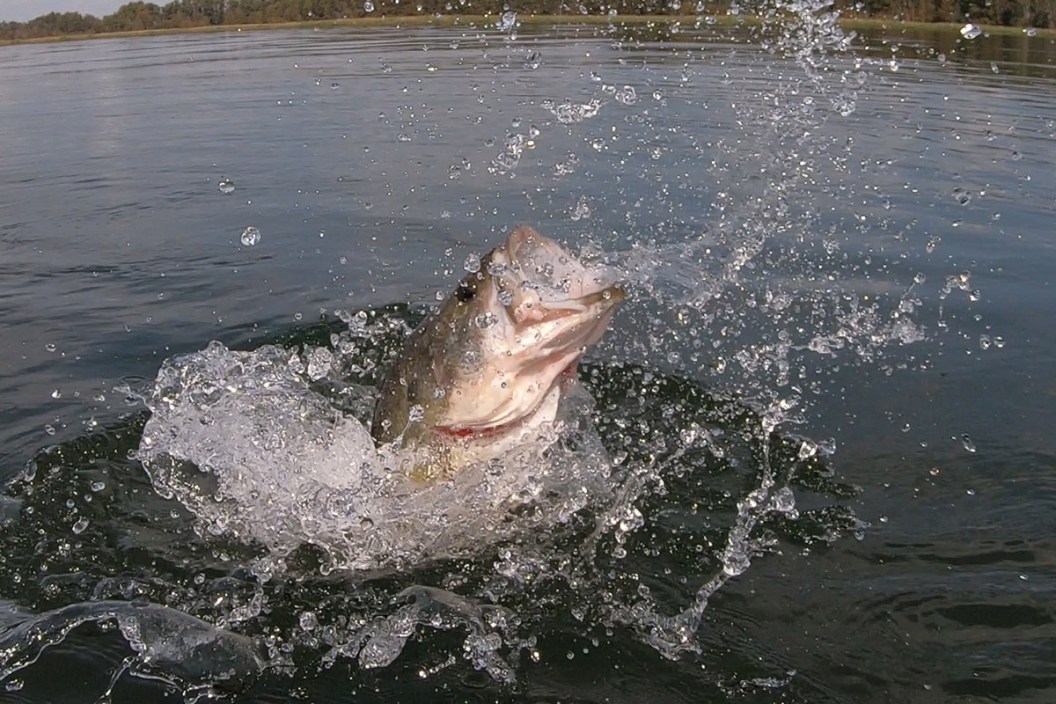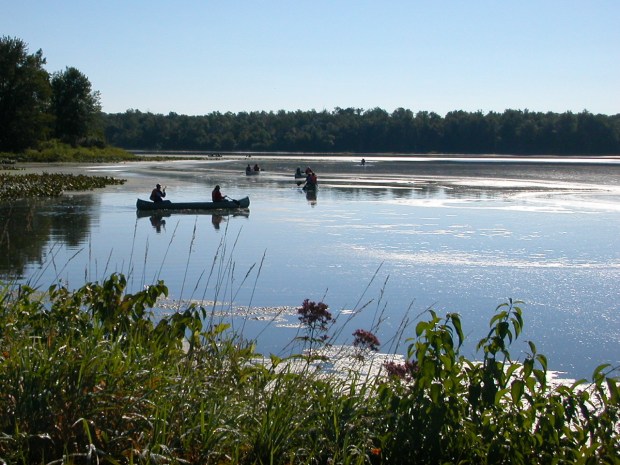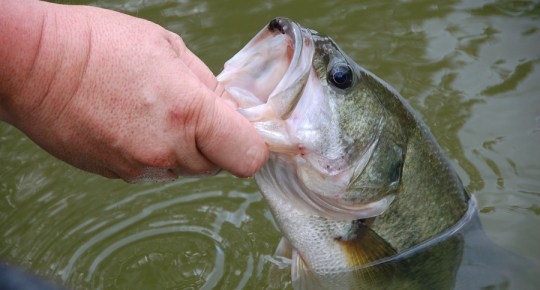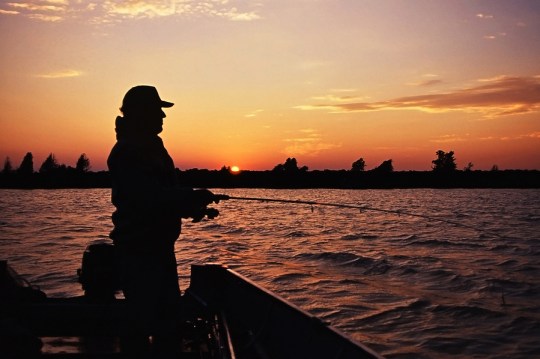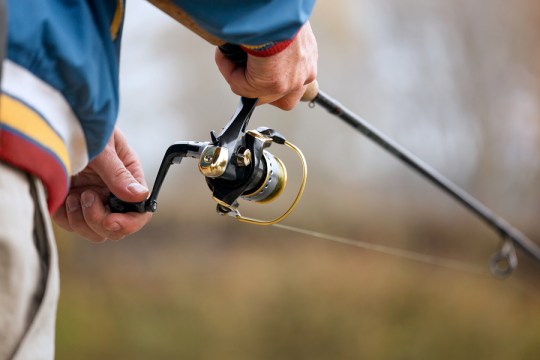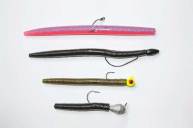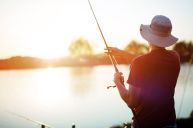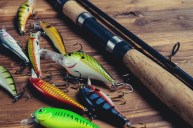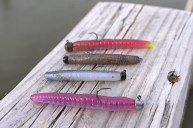If you're searching for tips on how to catch a bass, there's really no easy place to begin. There is a lot to consider, especially with the range and variety of choices to make and factors to determine. But whether it's smallmouth, largemouth or striped bass you're going after, many of the same supplies and techniques apply.
Bass are an aggressive fish, and can quickly become an angler's favorite species to go after. They can be found in plenty of places, can be caught with minimal equipment, and are one of the most prevalent species in America.
Location
Bass are found in many American lakes and rivers, and can be found elsewhere as well, including far off places like Japan where the species is popular with anglers. From Washington to South Carolina, and Minnesota to Arizona, bass are found in just about any corner of the US.
The biggest bass, and therefore the most popular places to fish for them, are Texas, Florida and California. Mexico happens to have a huge population of bass in their lakes and rivers, making it a great activity for American vacationers.
Rod and reel
Casting rods are the most common tools in the bass fisherman's arsenal, and are able to handle the heavy lines and big lures used in most cases. Ease and comfort take precedence with casting rods, and many of the techniques used to catch bass require one. Power fishing, which bass fishing often becomes, is best done with a casting rod.
Specific circumstances may call for a spinning rod, where lighter line and smaller baits are handled easier and with more finesse. Open water is ideal, as spinning rods can cause trouble when mixed with heavy cover and shallows.
To learn how to fish bass at night effectively, go here.
Most rods are made of graphite, creating a lightweight and sensitive feel great for long hours on the water. Graphite can be combined with fiberglass to form a composite rod, adding durability to the previously mentioned attributes. Composites are also known as cranking rods, and perform well when used with crankbaits.
Rod action refers to flexibility, and a fast action rod is best for bass. The faster the action, the more pressure gets put on the bass.
Reels operate under similar categories, and combining a casting rod with a casting reel (or spinning rod with spinning reel) will create ideal conditions. Many brands and styles are available, with new innovations appearing regularly.
Fishing Line
Ultimately, bass fishing line should be matched with the bait or lure you are using, so as to get the most out of the combination. The three common types are monofilament, fluorocarbon and braided line.
Monofilament lines are buoyant, and are ideal for topwater or spinnerbaits. They are best when used with spinnerbaits and buzzbaits.
Fluorocarbon line is more sensitive, has lower stretch and much more invisibility. However, fluorocarbon line sinks, which can have an effect on the action and drama you're trying to exhibit with your technique. It's too difficult to twitch or jerk a line that's completely underwater. Use fluorocarbon line when casting worms, crankbaits or when using the drop shotting technique see below).
Braided fishing line has a smaller diameter, increasing the amount of line that can be put in a reel and extending the range of casts. Frogs, heavy swimming lures and flipping jigs work well with braided line.
Read more about fishing lines here.
Lures and bait
The variety of lures and bait available for bass fishing can be intimidating. Many different styles will work when combined with the right rod, reel and line. These are some of the most popular choices:
Soft plastics, or worms, are likely the oldest baits used in bass fishing. They are usually taken in by bass quickly and not spit out like hard-bodied lures often are. Worms can be retrieved slowly or bounced around the bottom with the drop shotting technique (see below).
Spoon lures are typically made of metal and are heavier than others. The concave shape resembles a shoehorn, and creates action while retrieved through the water that drives bass crazy. They are best used in deep water, and can navigate through thick underwater vegetation easier than just about any other bait.
Spinnerbaits are versatile and despite their odd shape and look, can be extremely effective. One end includes a jig head and hook, while the other features one or two shiny spinning blades that attract bass nicely.
Thirty years ago, jerkbaits were touted as the secret baits of the pros. Clear and cold water is ideal for using jerkbaits, which come in a variety of sizes and colors. The idea is to match the appearance and action of a baitfish, especially with jerks and tugs on the line while retrieving.
See other top bass fishing lure choices here.
Crankbaits, plugs, minnows and wobblers are all terms used to describe virtually the same thing. Again, they resemble a small fish (one a bass would enjoy eating), and most include a lip on the front that creates a diving action when jerked. Sizes, colors and lip styles are in abundance, but choosing the right one depends on water conditions. Clear water makes natural colors, like those actually found on fish in that region, work best. Use brightly colored, flashy jerkbaits in murky waters.
Spinnerbaits feature metal blades that spin like a propeller when retrieved. Pros like Jimmy Houston swear by them, and for good reason; they're great because they can be used in a wide range of conditions. Ideally, low casts will help reduce splash on the lure's presentation, and avoid scaring fish away.
Poppers and other topwater baits stay on the surface and are operated with a tug (or pop) of the line, followed by a rest, and repeated as it's retrieved. Topwater action can entice bass from as deep as 30 feet to rise to the surface and hit a lure, one of the funnest parts of any style of fishing.
Approach
Bass are ambush feeders, meaning they will snatch at a lure with lightning quickness as it passses through the fish's area. Even if they aren't feeding, bass have been known to gulp lures out of sheer aggressiveness. This acts in the angler's favor, naturally.
While experts and amateurs alike will constantly debate over the best technique for catching bass, here are a few of our favorites.
Jerkbait: The jerkbait fishing technique is probably the easiest to learn, and one of the first additions to a beginning angler's trick bag. A stiff rod and a supple line will help make it effective.
A simple overhand or sidearm cast will send your jerkbait a good distance from your boat or the shore, giving enough room and opportunity for reeling back in while occasionally jerking the rod to attract bass and entice their attention.
Execute strong, downward thrusts of the rod while reeling in, which should mimic a less-than-healthy meal that bass will jump all over.
The jerkbait approach is best suited for clear water, since sight is the biggest part of the technique.
Find out how to follow autumn bass patterns here.
Pitching and Flipping: Though they are similar, pitching and flipping are two different ways to get a lure into shallow water with thick cover, a favorite hiding spot for big bass. A long rod (between 6.5 and 7.5 feet) and the right soft bait are essential in both techniques.
Pitching is the easier of the two; using a soft bait (ideally worm or tube jigs), let out as much line as the length of your rod. Keeping the reel open, grab the lure with your off hand, and lower the rod tip towards the water. Pull on the lure to bend the rod and add tension, aiming the handle towards your targeted area. In one motion, let go of the lure, release the reel and flick the rod up slightly. The slingshot effect, with practice, can be one of the best ways to get a bass lure where you want it to go.
Flipping involves letting out 10-15 feet of line and closing the reel. The line should be grasped between the reel and the first line guide, with a sideways arm extension. Raise the rod to swing the bait towards you, and the momentum should push it back out while feeding the line through your hand. The slack created by the movements will need to be tightened, and the technique will need to be practiced thoroughly to get it down.
For the only fishing knots you'll ever need to know, go here.
Drop Shotting: Invented by a saltwater fisherman, then popularized on the West Coast among professionals, the approach is great for highly-pressured lakes. Technically it's classified as a "finesse" technique. The drop shot technique uses a suspended lure above a weight, tied with the drop shot knot. The distance between the weight and the lure can vary, depending on the muddiness and vegetation of the body of water's bottom.
The line is either cast out or dropped straight down, and the weight is meant to settle on the bottom. A light wiggle of the line should attract bass without much work, with the occasional stop to let it rest. The line should be kept taught so any bites can be detected easily. Once a bite is felt, a strong tug upwards on the line should hook the fish, and the reeling in can begin.
Topwater: Probably the most exciting technique for catching bass, topwater fishing brings the action to the surface, allowing you to actually see, hear and anticipate the strike. There's nothing like watching a bass follow your bait and seeing the splash as it attacks its potential meal.
Poppers, jitterbugs and frogs are popular topwater lures, and most involve a long cast and a consistent retrieval of the line. Extravagant movements, especially with poppers and frogs, will do an especially good job of attracting lunkers.
